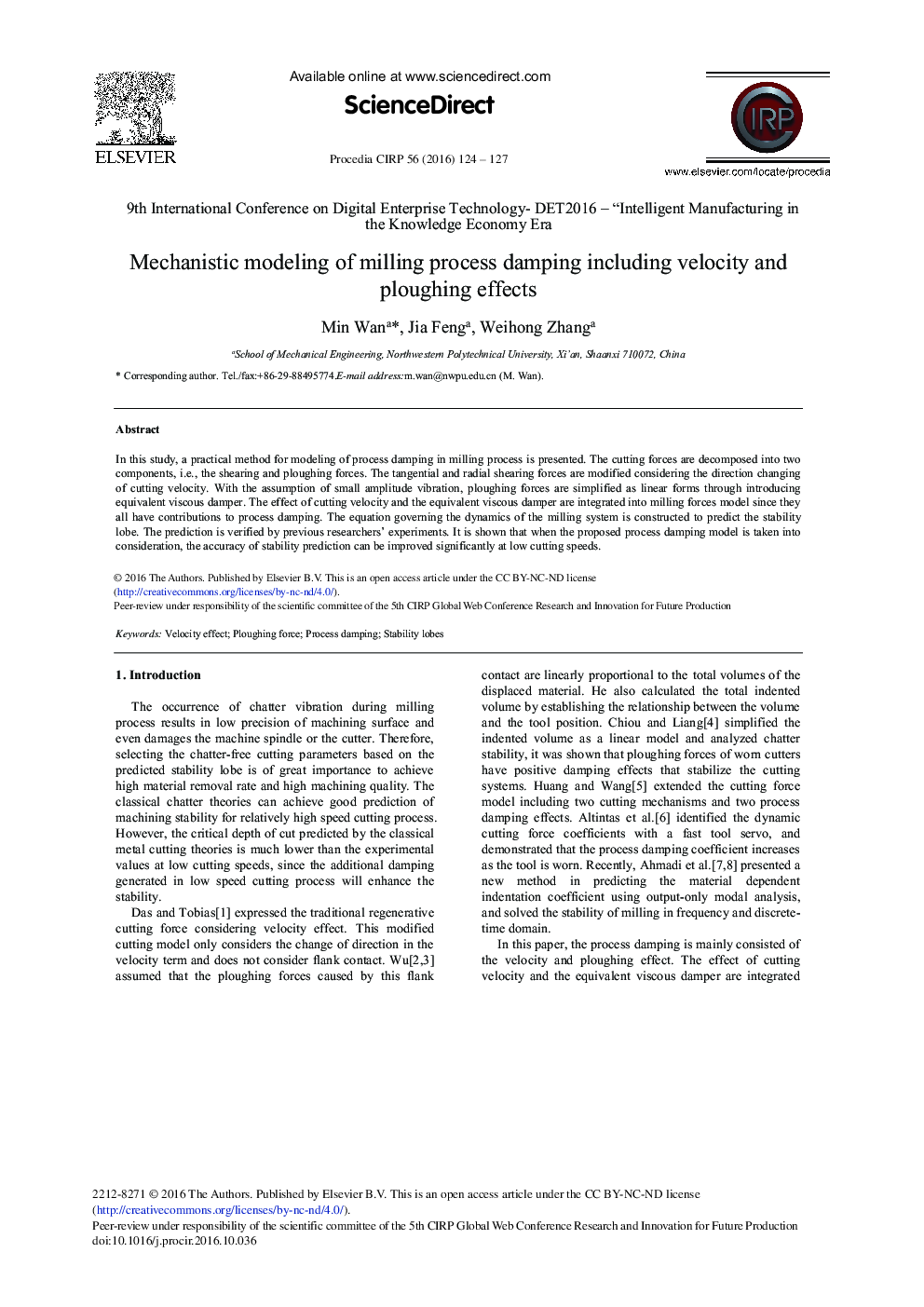| کد مقاله | کد نشریه | سال انتشار | مقاله انگلیسی | نسخه تمام متن |
|---|---|---|---|---|
| 5469704 | 1519296 | 2016 | 4 صفحه PDF | دانلود رایگان |
عنوان انگلیسی مقاله ISI
Mechanistic Modeling of Milling Process Damping Including Velocity and Ploughing Effects
ترجمه فارسی عنوان
مدل سازی مکانیکی از خم شدن روند فرآیند، از جمله سرعت و اثرات شخم
دانلود مقاله + سفارش ترجمه
دانلود مقاله ISI انگلیسی
رایگان برای ایرانیان
کلمات کلیدی
اثر سرعت، نیروی انفجاری، فروپاشی فرآیند، لوب پایداری
ترجمه چکیده
در این مطالعه، یک روش عملی برای مدل سازی فرآیند دمیدن در فرآیند آسیاب ارائه شده است. نیروهای برش به دو بخش تقسیم می شوند، یعنی نیروهای برش و شخم. نیروهای برشی موازی و شعاعی با توجه به تغییر جهت سرعت برش اصلاح می شوند. با فرض ارتعاش دامنه کوچک، نیروهای شخم به عنوان فرم خطی از طریق معرفی دمپر ویسکوز معادل ساده می شوند. اثر سرعت برش و دمپر چسبندگی معادل به مدل نیروی فرزند متصل می شوند، از آنجا که همه آنها به روند دمیدن کمک می کنند. معادله حاکم بر پویایی سیستم فرز، برای پیش بینی لبه ثبات ساخته شده است. پیش بینی شده توسط آزمایشات محققان قبلی تایید شده است. نشان داده شده است که هنگامی که مدل فرآیند فروپاشی پیشنهاد شده مورد توجه قرار گیرد، دقت پیش بینی ثبات می تواند به طور قابل توجهی در سرعت های برش پایین بهبود یابد.
موضوعات مرتبط
مهندسی و علوم پایه
سایر رشته های مهندسی
مهندسی صنعتی و تولید
چکیده انگلیسی
In this study, a practical method for modeling of process damping in milling process is presented. The cutting forces are decomposed into two components, i.e., the shearing and ploughing forces. The tangential and radial shearing forces are modified considering the direction changing of cutting velocity. With the assumption of small amplitude vibration, ploughing forces are simplified as linear forms through introducing equivalent viscous damper. The effect of cutting velocity and the equivalent viscous damper are integrated into milling forces model since they all have contributions to process damping. The equation governing the dynamics of the milling system is constructed to predict the stability lobe. The prediction is verified by previous researchers' experiments. It is shown that when the proposed process damping model is taken into consideration, the accuracy of stability prediction can be improved significantly at low cutting speeds.
ناشر
Database: Elsevier - ScienceDirect (ساینس دایرکت)
Journal: Procedia CIRP - Volume 56, 2016, Pages 124-127
Journal: Procedia CIRP - Volume 56, 2016, Pages 124-127
نویسندگان
Min Wan, Jia Feng, Weihong Zhang,
